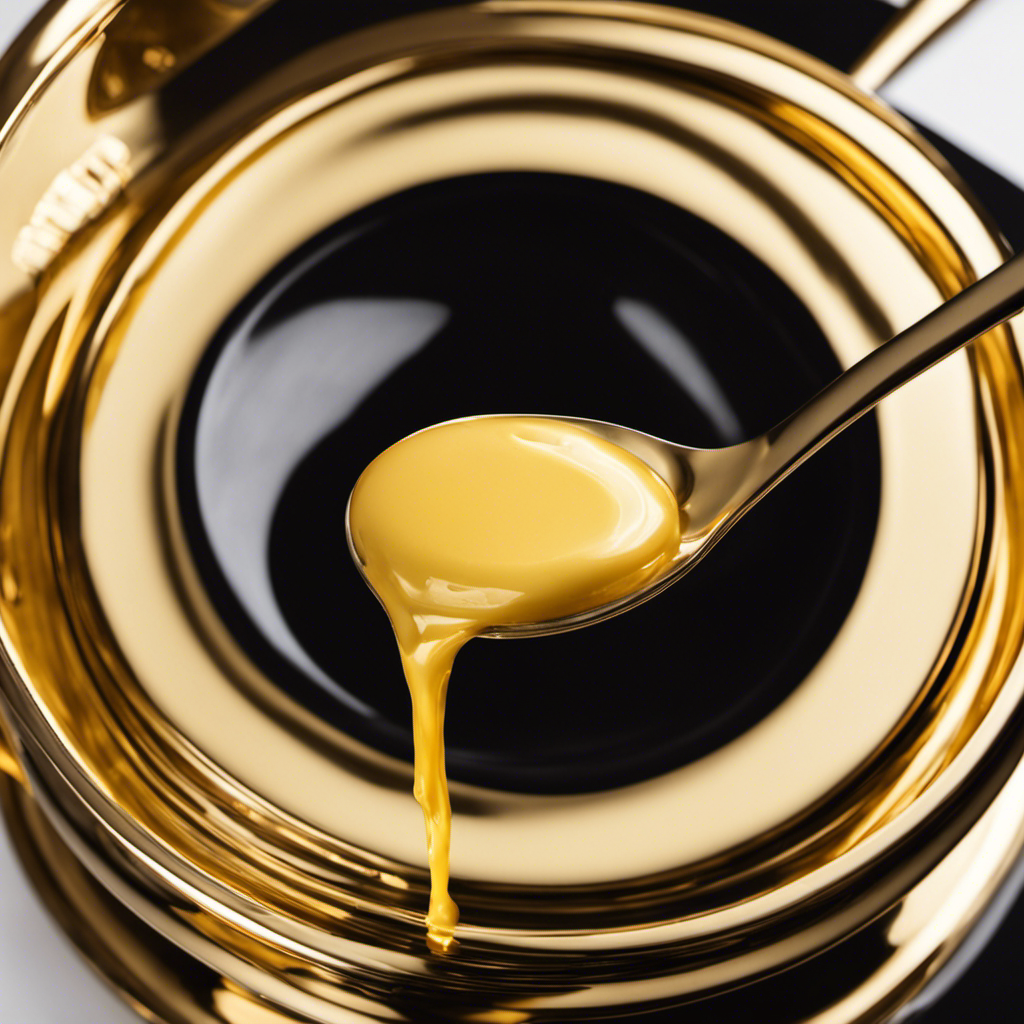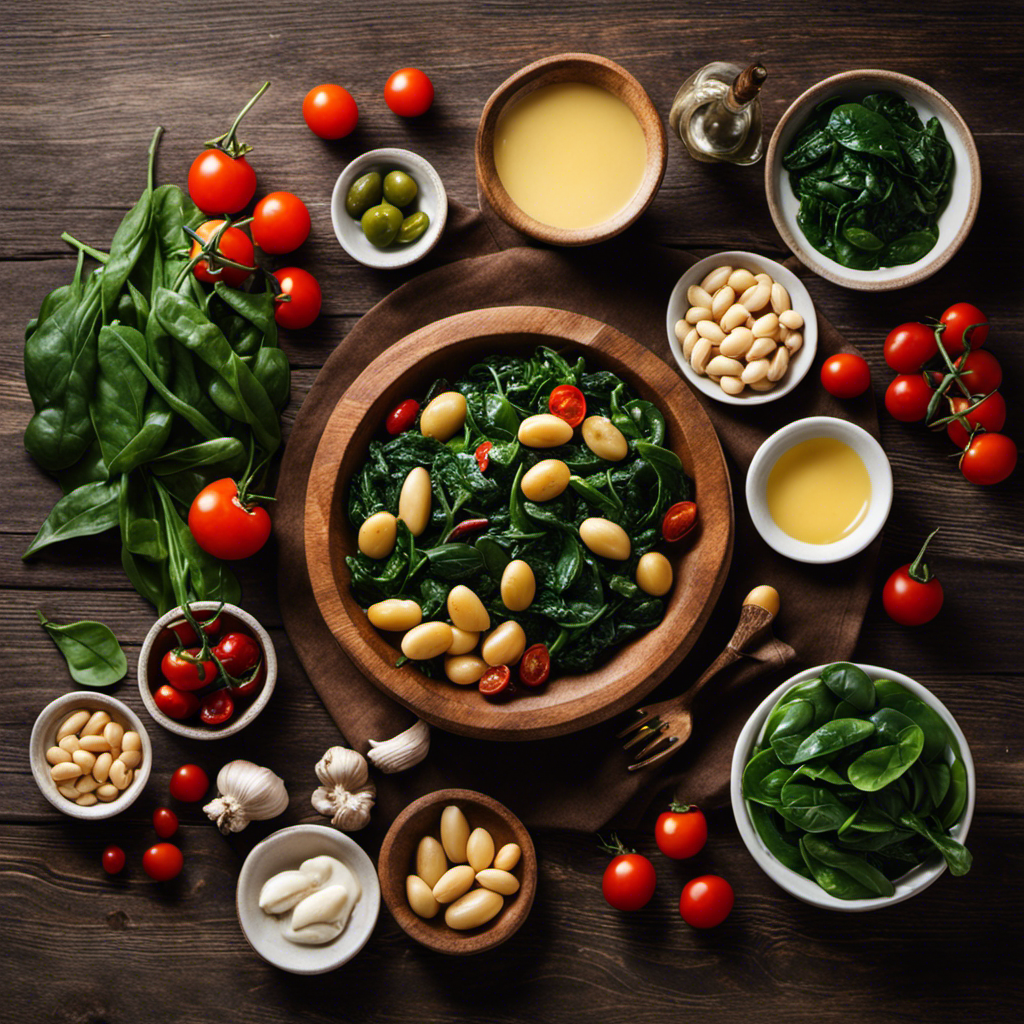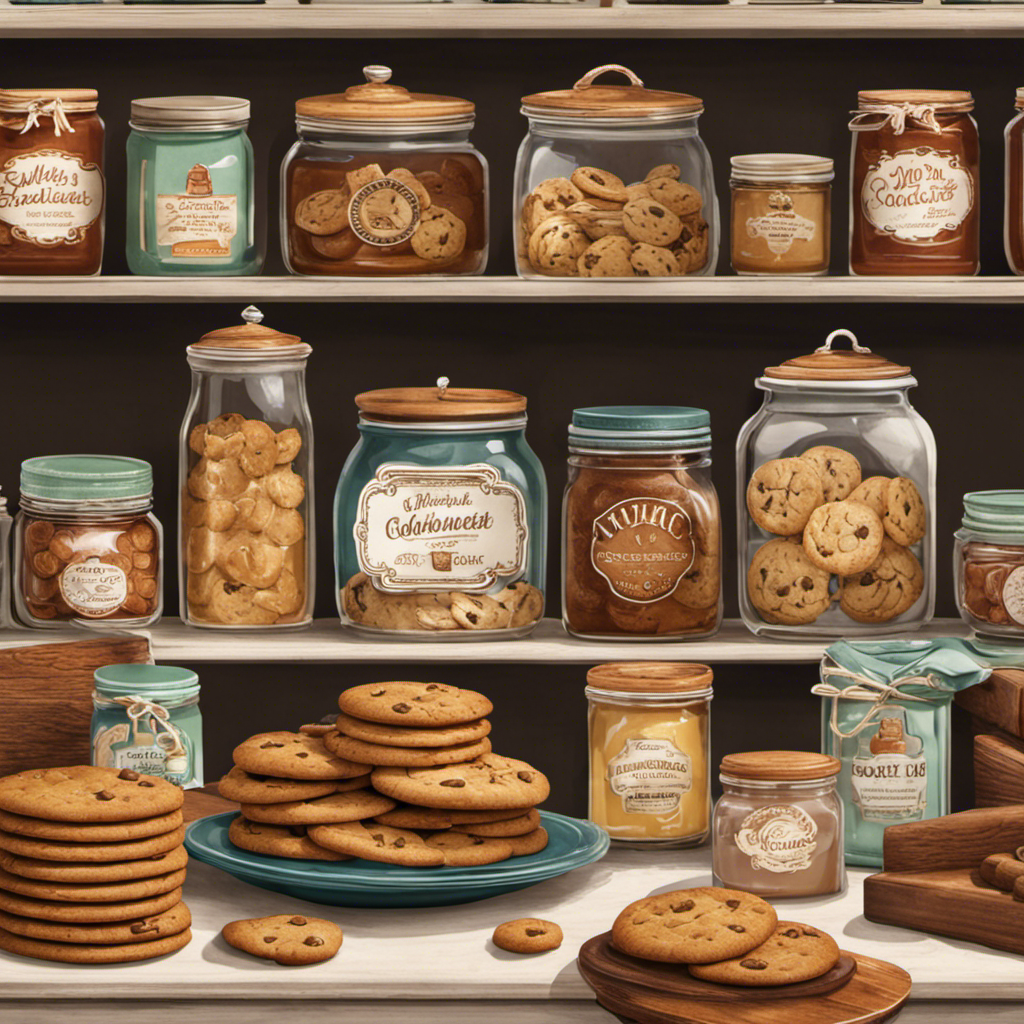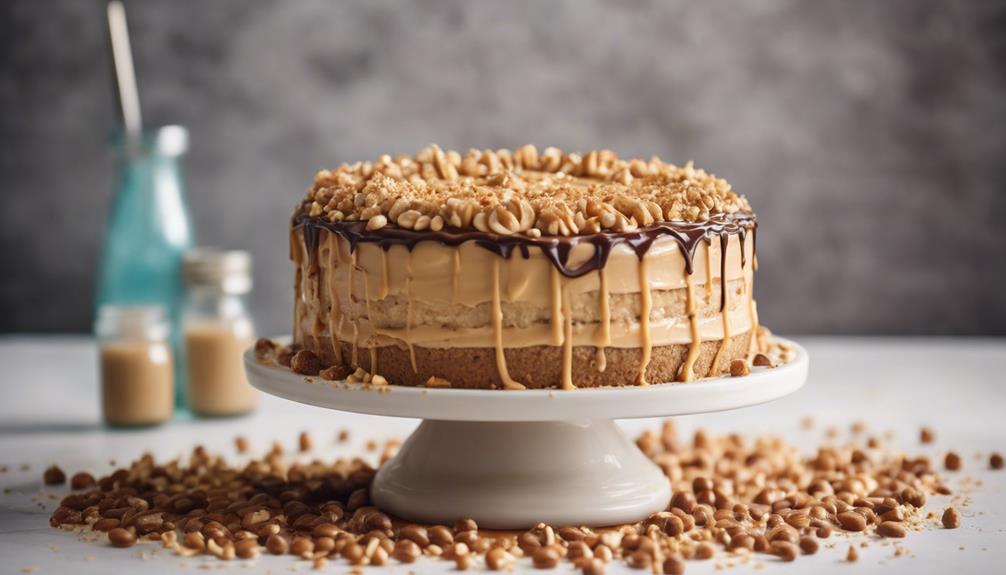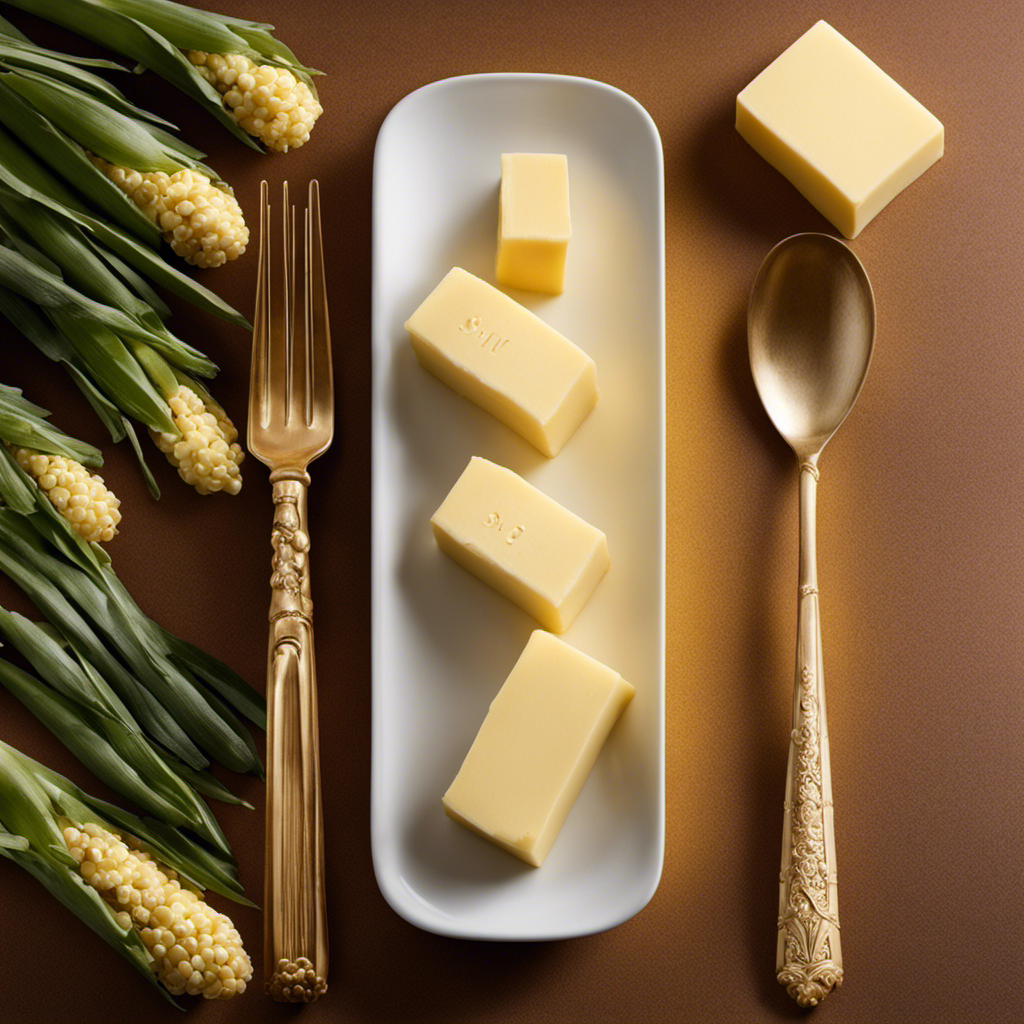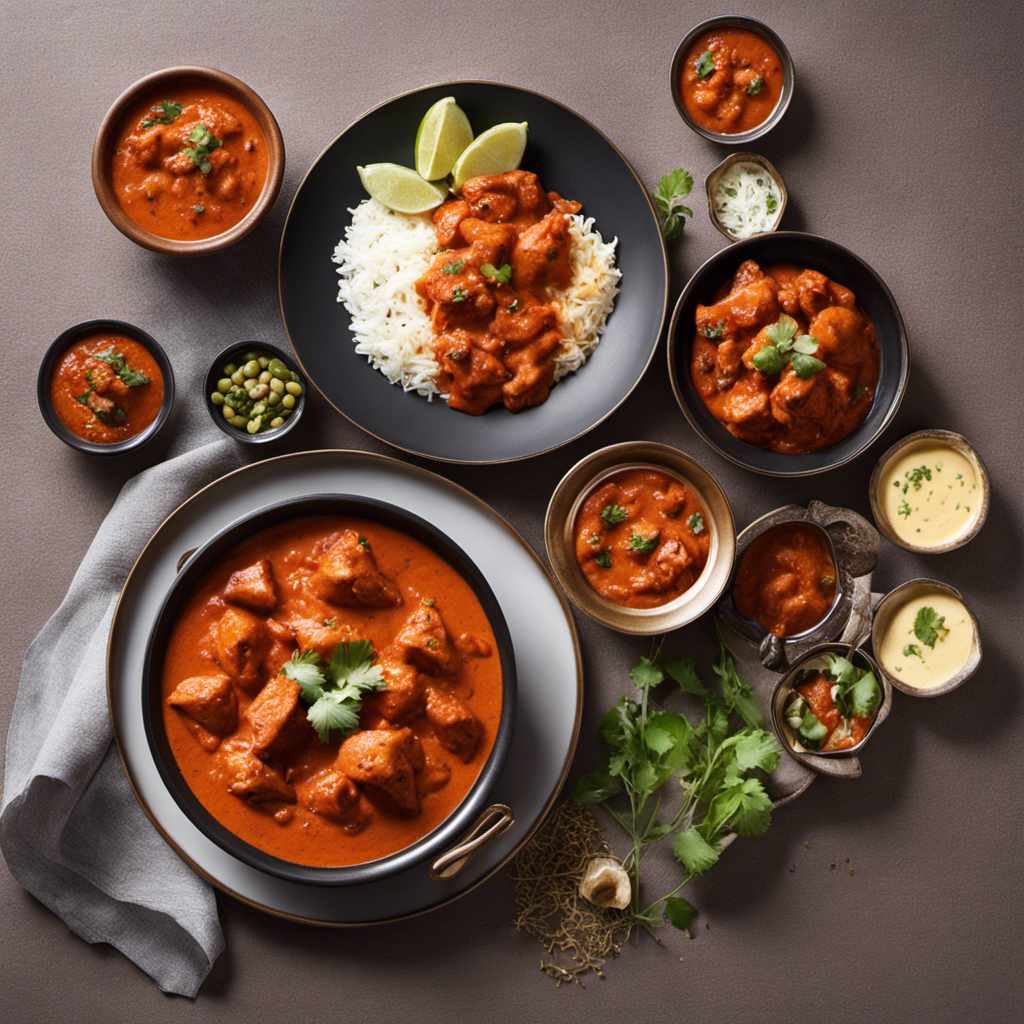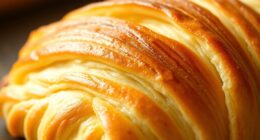As someone who loves cooking, I’ve always been amazed by the amazing abilities of butter. But have you ever thought about what temperature can cause this beloved ingredient to go from golden perfection to an unappetizing char?
In this article, we will delve into the science behind the burning point of butter. Discover the factors that affect its combustion, learn how to determine its smoke point, and find useful tips to prevent your butter from going up in smoke.
Let’s explore the precise temperatures where butter’s magic can quickly turn into a culinary mishap.
Key Takeaways
- Butter has a low smoke point of around 350°F (177°C).
- Factors such as heat level, denaturation of proteins, and moisture loss affect the burning point of butter.
- Butter combustion involves hydrolysis and oxidation, resulting in a burnt flavor.
- Visual cues, distinct burnt smell, and temperature monitoring help determine when butter has reached its smoke point and prevent burning.
Butter Burn Temperature: Understanding the Basics
I’ve always wondered what temperature butter burns at. Understanding the basics of butter burn temperature can help us in preventing butter burn accidents and debunk common misconceptions about butter combustion.
Butter has a relatively low smoke point of around 350°F (177°C). This means that when heated beyond this temperature, it starts to break down, releasing smoke and potentially catching fire.
It’s important to note that butter contains milk solids, which can burn at lower temperatures than the fat itself.
Contrary to popular belief, adding water to a pan with butter doesn’t prevent it from burning. Water actually accelerates the process by reaching its boiling point quickly, causing the butter to heat up rapidly.
To prevent butter burn accidents, it’s recommended to use clarified butter, which has a higher smoke point, or to use alternative cooking oils with higher smoke points.
Factors Affecting Butter Burning Point
One factor that affects the burning point of butter is the level of heat applied while cooking. When butter is subjected to higher temperatures, its melting point is reached and it begins to break down.
Here are four key effects of heat on butter properties:
-
Denaturation of proteins: The heat causes the proteins in butter to unfold and lose their original structure, leading to changes in texture and flavor.
-
Separation of components: Excessive heat can cause the butterfat and milk solids to separate, resulting in a greasy texture and uneven distribution of fats.
-
Formation of milk solids: As the butter heats up, the moisture in it evaporates, leaving behind milk solids that can burn and contribute to an unpleasant taste and smell.
-
Oxidation of fats: Heat accelerates the oxidation process in butter, causing the fats to break down and release volatile compounds, giving rise to a burnt or rancid flavor.
Understanding these effects on butter properties is crucial for preventing burning and achieving optimal cooking results.
Now let’s delve into the science behind butter combustion.
The Science Behind Butter Combustion
As a cook, I’ve always been fascinated by the science behind the combustion of different ingredients. When it comes to butter, the combustion process involves several chemical reactions.
Butter is composed mainly of fats, which are a mix of different molecules called triglycerides. When heated, these triglycerides start to break down through a process called hydrolysis. This results in the release of fatty acids and glycerol.
The fatty acids then undergo further reactions, such as oxidation, which produce various compounds like aldehydes, ketones, and acids. These compounds contribute to the characteristic aroma and flavor of burned butter.
The temperature at which butter burns can vary depending on factors like its water content, impurities, and the presence of other ingredients.
Understanding the science behind butter combustion can help us control the cooking process and create delicious dishes.
How to Determine the Smoke Point of Butter
To determine the smoke point of butter, I rely on the visual cues of the butter starting to release smoke and develop a distinct burnt smell. This indicates that the butter has reached its smoke point, which is the temperature at which it begins to break down and burn.
However, it’s important to note that the smoke point of butter can vary depending on factors such as the type of butter (salted or unsalted), the quality of the butter, and the cooking method.
To accurately measure the temperature of butter, I use a digital thermometer. This allows me to insert the probe into the butter and monitor the temperature as it heats up.
Tips for Preventing Butter From Burning
I find that adjusting the heat to a lower setting and frequently stirring the butter helps prevent it from burning.
When cooking with butter, it’s essential to use the right techniques to avoid scorching. Firstly, it’s crucial to choose a heavy-bottomed pan as it distributes heat evenly and reduces the chances of burning.
Secondly, melting the butter on low to medium heat provides better control over the temperature. This prevents the butter from reaching its smoke point, which is around 350°F (177°C).
Additionally, stirring the butter regularly ensures that it cooks evenly and reduces the likelihood of it sticking to the pan.
Lastly, if you notice any signs of burning, such as a darkening color or a burnt smell, immediately remove the pan from heat and transfer the butter to a different container.
Frequently Asked Questions
Can Butter Burn at Room Temperature?
Yes, butter can burn at room temperature. The effect of heat on butter causes it to melt and eventually combust. Factors such as the heat source, duration of exposure, and the presence of other flammable materials can affect butter combustion.
Does the Type of Butter Affect Its Burning Point?
Yes, the quality of butter can affect its burning point. Additionally, the cooking method employed can also impact the temperature at which butter burns. Both factors should be taken into consideration for optimal cooking results.
Can Adding Salt to Butter Alter Its Burning Temperature?
Adding salt to butter can alter its burning temperature. The type of butter, whether salted or unsalted, can affect how quickly it burns. Additionally, the size of the salt crystals in the butter may also impact its burning temperature.
What Happens to Butter When It Burns?
When butter burns, it undergoes a chemical process that results in the breakdown of its fat molecules. This can lead to the formation of unpleasant flavors and aromas, which can negatively impact the taste of food.
Is Burnt Butter Safe to Consume?
Consuming burnt butter can pose health risks due to the formation of harmful compounds. To prevent butter from burning while cooking, use low to medium heat, stir frequently, and consider using clarified butter instead.
Conclusion
In conclusion, understanding the burn temperature of butter is essential for preventing it from turning into a charred mess. Factors like milk solids and moisture content can influence the burning point of butter, which typically ranges between 250-350°F (121-177°C).
It’s crucial to monitor the temperature closely while cooking with butter to avoid exceeding its smoke point. Remember, knowledge is power, and knowing the ins and outs of butter combustion can help you cook with precision and finesse.
So, don’t let your butter go up in smoke!
